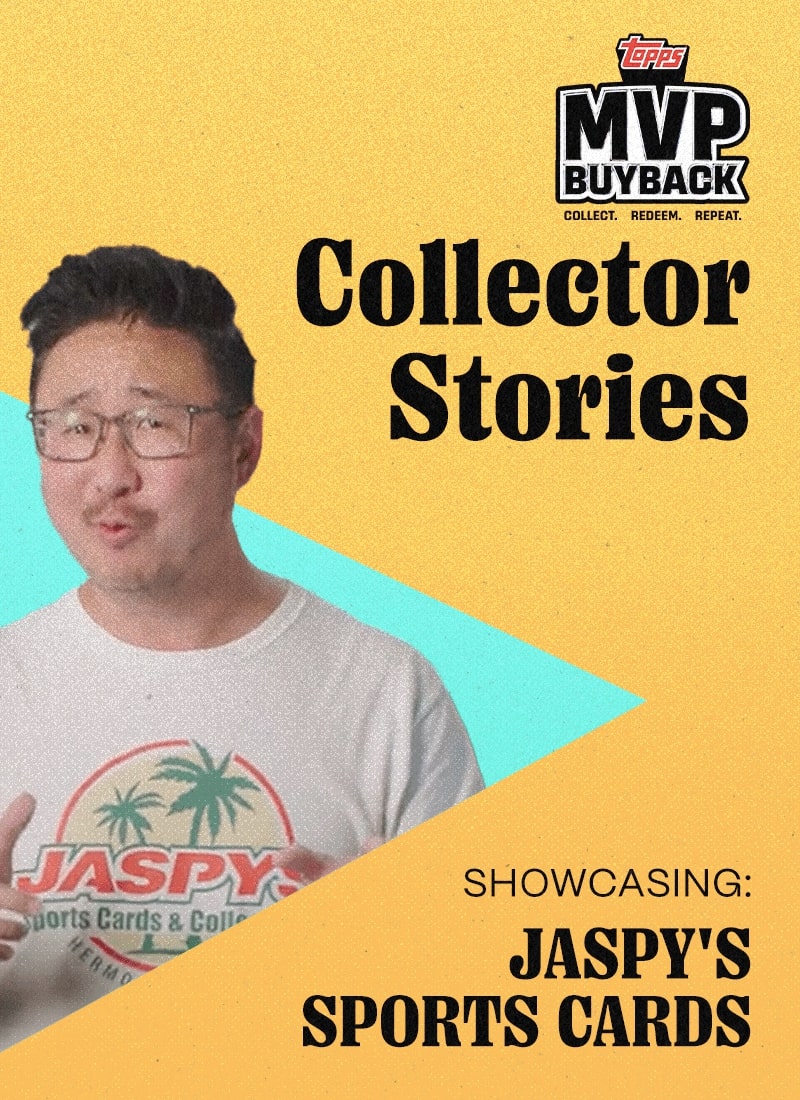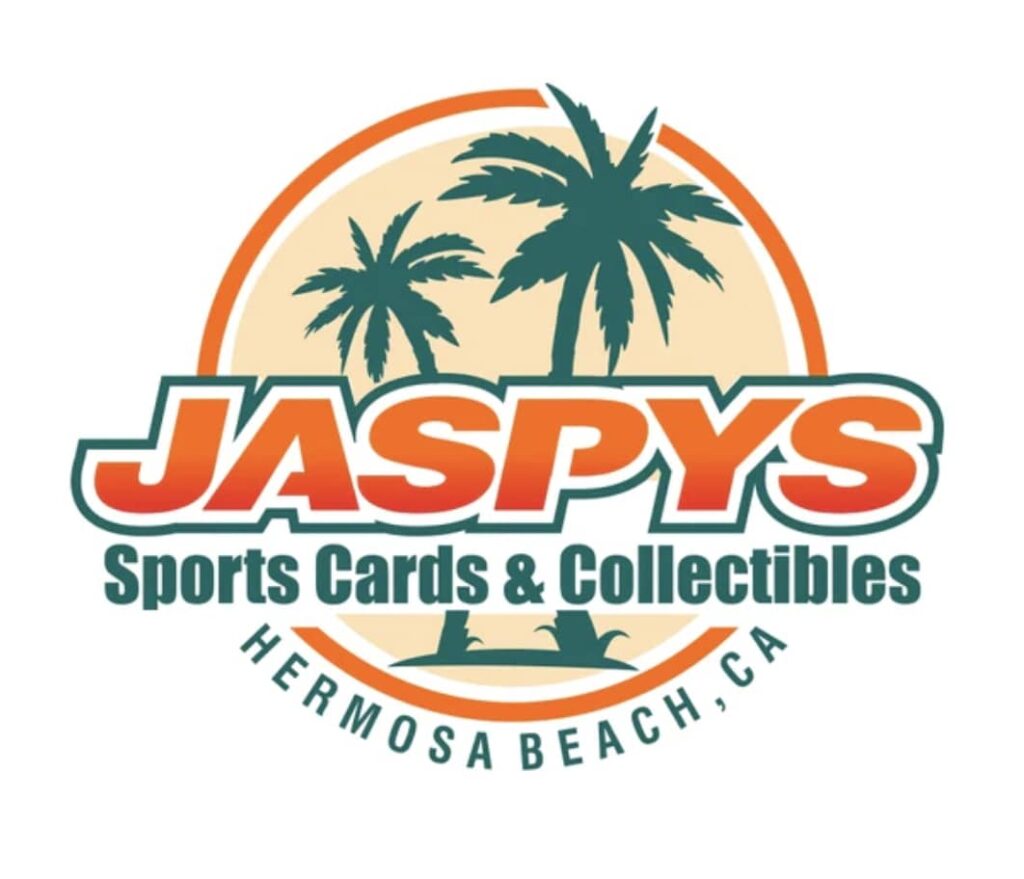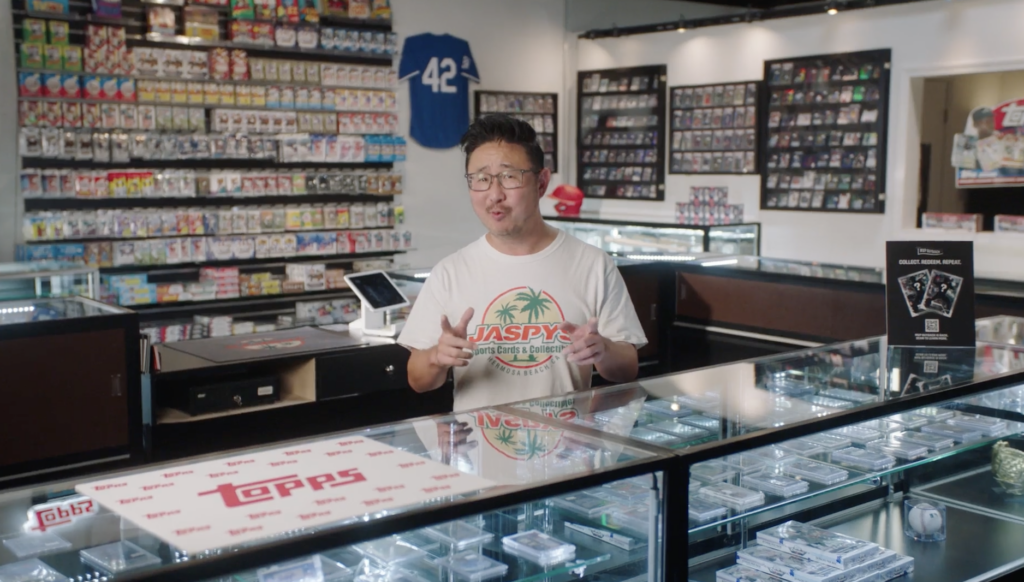
MVP Shop Talks MVP Collecting
We recently caught up with the Jaspersen clan of Jaspy’s Sports Cards & Collectibles to talk collecting, running a shop, and the impact of the Topps Chrome MVP Buyback Program. The current shop in Hermosa Beach along the Pacific Coast Highway is a thoroughly modern hobby confection of OG-collecting bona fides and an innovative spirit. The Jaspersen family’s partnership with the Topps Chrome MVP Buyback Program, in addition to establishing Jaspy Case Breaks, has helped Jaspy’s draw new and seasoned collectors to the shop and the hobby. Read on to learn about Jaspy’s past and present and how the IRL experience of shops remains the hobby’s most important aspect with the latest installment of Collector Stories.

How did you first get involved with the Topps Chrome MVP Buyback Program?
Topps approached us to participate in the Topps Chrome MVP Buyback Program. We saw it as an excellent opportunity to draw customers into our store, which is always beneficial for business. This is our second year in the program, and it has already brought in a lot of new traffic, including some collectors with serial-numbered cards, not just basic paper ones.
What impact has the MVP Buyback Program had on your store?
The program significantly increased our customer base. We’ve seen about a 35-40% increase in new customers, which is remarkable in a city like LA, where there’s no shortage of card shops. These customers often spend their MVP Buyback credit immediately in-store. What was very cool is that about 15-20% of these new customers have now become regulars at our store.

Joe Lee welcoming Acuña into the shop for some Topps Chrome MVP Buyback store credit.
What’s the history behind Jaspy’s?
Jaspy’s is a family business started by myself, my son Nick (who is the current “Jaspy”), my daughter Maren, and our crew. My father began collecting cards in 1933, and I followed in the early-to-mid 1960s, and my son, Nick, caught the bug in 2010. I’ve been actively selling cards since my first show in 1970. This shop in Hermosa Beach is the fourth I’ve been part of, and we’ve been here for about four years. We began in a garage about ten years ago, focusing on breaking. The business grew, and we eventually moved to our current location. The pandemic significantly boosted our business, and we’ve continued to grow since then. This shop represents my lifelong passion for collecting and participating in the industry.
What significant changes have you seen in the hobby over the years?
The biggest change has been the internet – particularly eBay. The internet helped shift the focus away from collecting sets to chasing hits. However, the parent-child engagement in card collecting remains a constant.
Why are local hobby shops like Jaspy’s crucial to the collecting community?
Local hobby shops act as ambassadors for the industry. We provide advice, value estimation, and knowledge about the latest trends. Our shop creates a community space where collectors can engage, learn, and share their passion. We’re a hub for both new and seasoned collectors, providing a safe and educational space for learning and sharing for collectors of all ages.
What role do hobby shops play in today’s predominantly online trading card world?
Hobby shops like ours serve as the physical touchpoint for the industry, offering firsthand experiences with cards and collectors. Despite the rise of online platforms, the tangible aspects of card collecting and the community feel of a hobby shop remain irreplaceable.
How do Jaspy’s and shops generally attract new and young collectors?
We aim to educate and provide a safe space for young collectors. Going back to that parent-child connection, parents appreciate our store as a secure and fun place for kids to learn about card collecting, money management, and the value of community. Shops remain the best place for new collectors – young or old – to get hooked and join the hobby.
Follow Jaspy’s